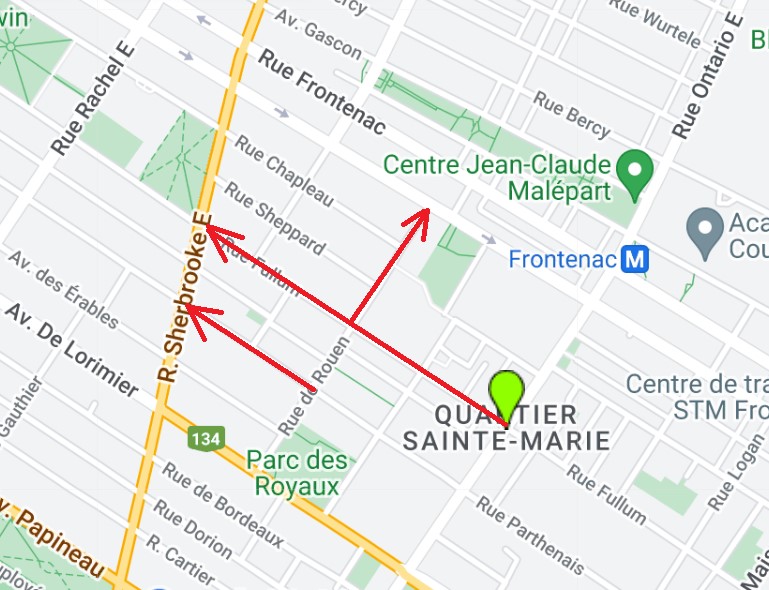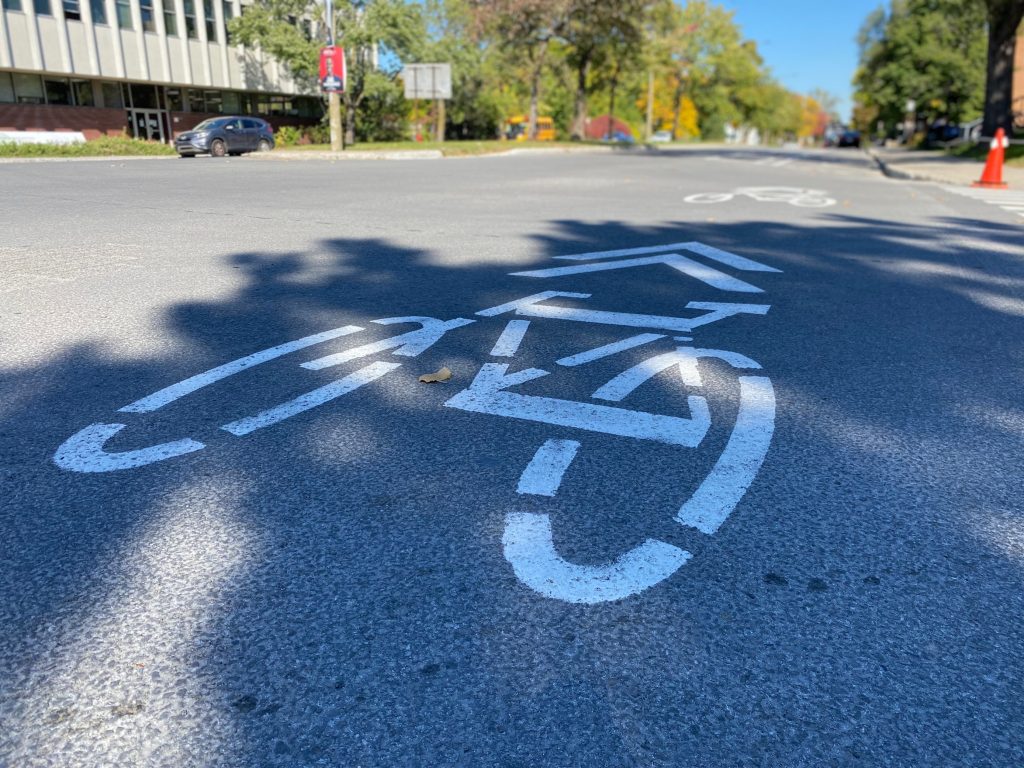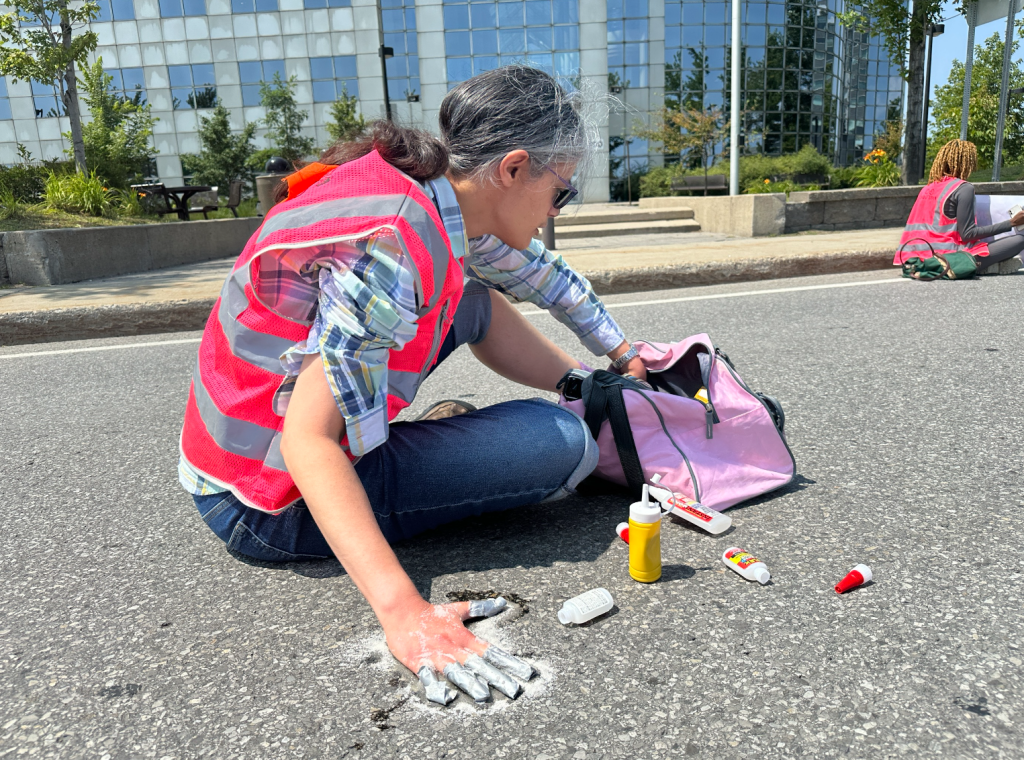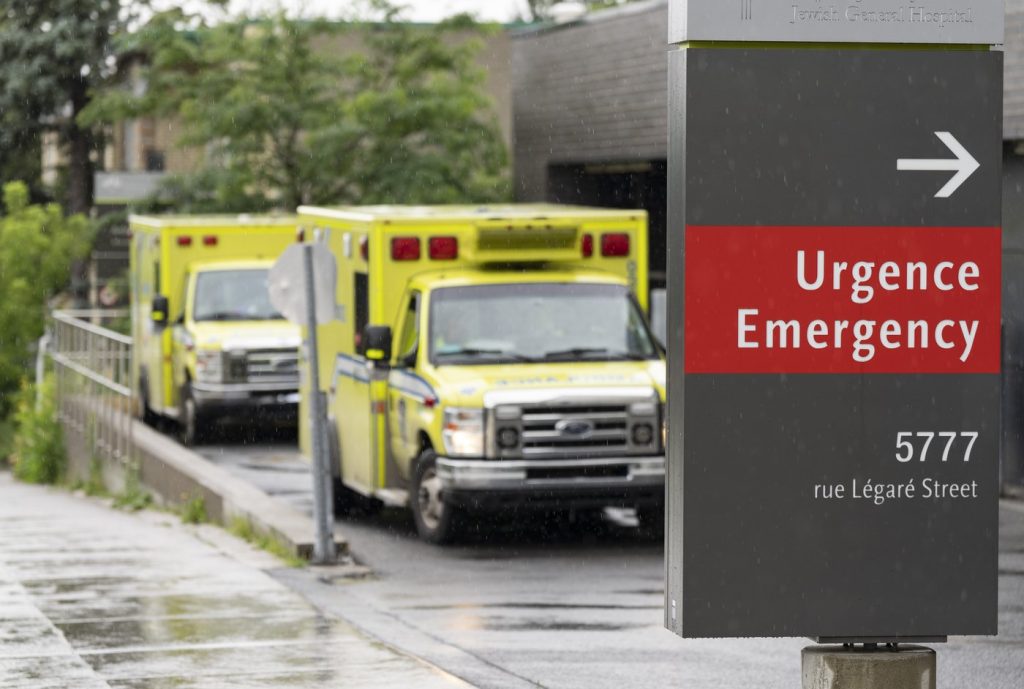Montreal works to secure more school zones, improve pedestrian safety
Posted January 27, 2023 12:36 pm.
Last Updated January 27, 2023 6:59 pm.
The city of Montreal announced more measures to improve safety for pedestrians in the Ville-Marie borough – making Parthenais, de Rouen, Fullum and Larivière streets more secure.
This comes as citizen committees across Quebec protested on Tuesday morning, calling for school zones to be made safer, after a seven-year-old Ukrainian girl was killed in a hit-and-run walking to school in Montreal’s Ville-Marie back in December.
“Determined to ensure the safety of everyone and the quality of life in its populated neighbourhoods, the borough of Ville-Marie is accelerating the deployment of actions planned in its 2020-2030 Local Transportation Plan and is announcing that new traffic calming measures in the Sainte-Marie sector will come into effect at the end of classes,” said the city in a press release.
“In concrete terms, the borough intends to reduce the number of vehicles using local streets as shortcuts as much as possible, thanks to one-way streets.”
The modifications that will be implemented in this first phase are aimed at reducing the number of cars on local streets and increasing safety in the vicinity of schools, daycare centres and community organizations:
– Making Fullum Street one-way, northbound, between Ontario and Sherbrooke streets;
– Making Parthenais Street one-way, northbound, between De Rouen and Sherbrooke streets
– One-way traffic on de Rouen Street, eastbound, between Fullum and D’Iberville streets.

(CREDIT: City of Montreal)
These measures are in addition to those put in place in December, namely making stop signs bigger, the narrowing of the lane on Parthenais Street at the corner of de Rouen Street, as well as an increased police presence.
“Other initiatives will be rolled out over the course of the year, such as the addition of speed bumps, the securing of alleys and the installation of numerous sidewalk projections. A complete plan for 2023 will be announced in the coming months.”
The city adds that all measures announced on Friday will be monitored to evaluate their effectiveness and impact. To this end, the borough of Ville-Marie is working closely with institutional and local partners, community groups and civil society groups to implement its various interventions.
“The safety of pedestrians, especially the most vulnerable, has always been at the heart of our administration’s priorities, right from the beginning of our first mandate. Despite important changes made throughout the territory of Montréal, we want to go further and faster,” said Valérie Plante, Mayor of Montréal and of the Ville-Marie borough.
“The Centre-Sud sector is particularly affected by the unsustainable increase in the number of vehicles on local streets and we are taking additional measures to limit the impact. The population is right to mobilize everywhere in Quebec to demand better safety of travel and we invite all our partners to answer this call. We all have a role to play in making our streets safer.”
Plante adds, putting in speed bumps is a better way to slow down certain roads compared to photo radar, as it reduces the speed in the area and reducing GPS shortcuts.
MORE: 25 schools across Quebec participate in demonstrations demanding school zone safety
“Since the borough of Ville-Marie is a hub that generates thousands of trips every day, we need to do our utmost to calm traffic and ensure the safety of everyone, especially in the Centre-Sud neighbourhood,” added Sophie Mauzerolle, City Councillor for the Sainte-Marie district and the person responsible for transportation and mobility on the City of Montreal’s Executive Committee.
“We are confident that the measures announced today will have a significant impact on reducing traffic on residential streets in the area. However, we are committed to going even further to protect the most vulnerable users on our streets. We will spare no effort to make our neighbourhoods safer and improve the quality of their living environments.”
A member of the Collectif apaisement pour Sainte-Marie says another way to help would be to increase transit in high-traffic areas.
“The number of cars on the streets of Montreal is increasing faster than the population. So that’s the base issue. So we need more public transit, we need more things in place to help people to not use their car and to use other modes, use public transit for the most part,” explained Chris McCray, a member of the Collectif apaisement pour Sainte-Marie.
“We thank the Ville-Marie borough administration and teams for initiating the development of this ambitious traffic calming plan. These first interventions will improve the safety and quality of life of the residents of Sainte-Marie. The changes announced today will greatly reduce and slow down through traffic in this family-friendly area, making it safer for residents, including local children. We will continue to work with borough staff to help develop similar plans for other areas of South Central,” said McCray.
“We see the seriousness of the work being done by the Ville-Marie borough teams and are optimistic about the important changes that are coming to the South Central area. The planned one-way northbound lane on Fullum Street is perfectly in line with our Committee’s vision of traffic calming and we look forward to seeing its implementation! The process undertaken seems to us to be particularly constructive,” added Carl St-Denis, co-initiator of the Fullum Street Committee.
“The sort of competition going on at intersections is if the number of cars is reduced then it’s quality of life for pedestrians that are increased. So if cars have to make a detour of 2 minutes, for example, I would argue that it’s nothing in comparison to the safety and the overall feeling of safety in the neighborhood. That’s what I would tell them. So the road needs to be shared better than what it is right now,” added St-Denis.
“These measures are in direct response to the objectives of the City of Montreal’s Vision Zero Action Plan and Ville-Marie’s Local Transportation Plan, both of which aim to achieve zero deaths and serious injuries on the roads. These local actions are in addition to the efforts of the City of Montreal, which has secured the approaches to nearly 80 schools since 2020. With a doubled budget dedicated to making travel safer, more than 50 schools frequented by children and seniors will be made safe by 2023 throughout Montreal.”



